Cruise speed 339 km/h Length 7.92 m | Wingspan 12 m | |
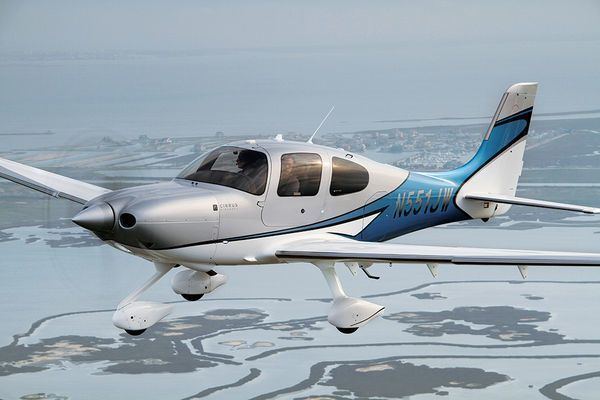 | ||
Engine types Piston, Continental IO-550 | ||
First solo in cirrus sr22
The Cirrus SR22 is a single-engine four- or five-seat composite aircraft built from 2001 by Cirrus Aircraft of Duluth, Minnesota.
Contents
- First solo in cirrus sr22
- Cirrus sr22t g5 flight review
- Design and development
- Turbocharged models
- Glass cockpit
- Flight into known icing
- Operational History
- Variants
- Operators
- Accidents and incidents
- Specifications
- References
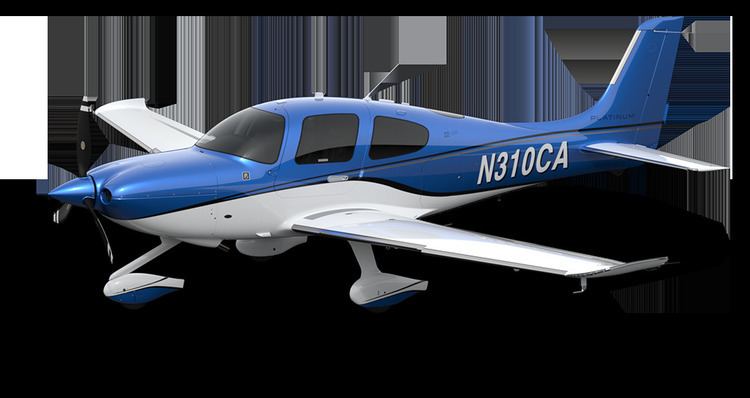
It is a development of the Cirrus SR20, with a larger wing, higher fuel capacity, and a more powerful, 310-horsepower (231 kW) engine.
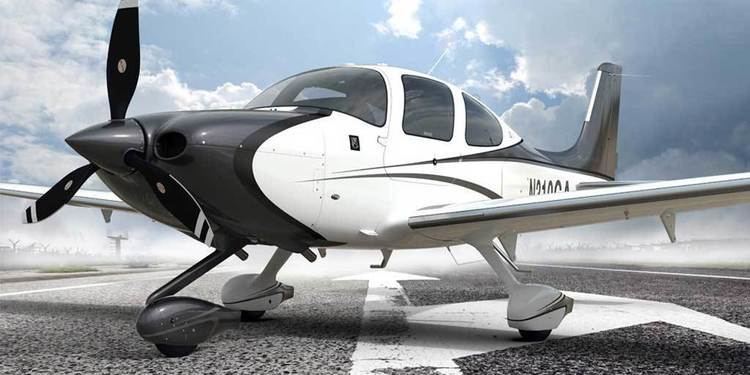
The SR22 has been the world's best-selling general aviation (GA) airplane every year since 2002. It is the most-produced GA aircraft made from composite material, accounting for over 30% of the entire piston aircraft market.
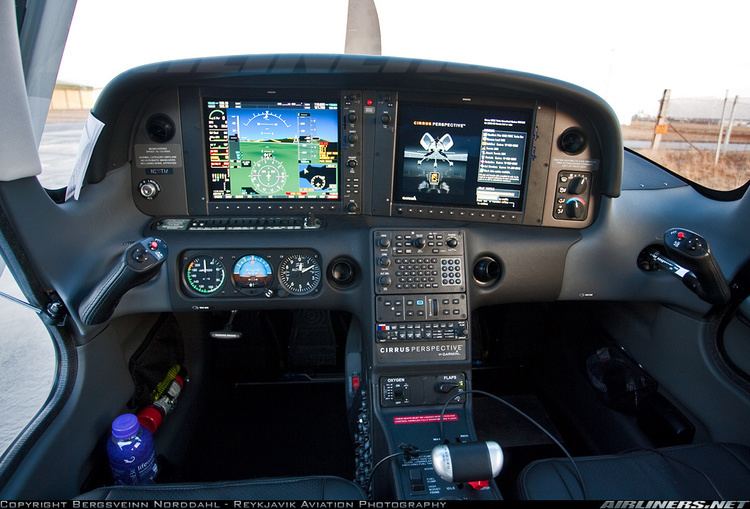
The Cirrus SR22 is equipped with a whole-plane emergency recovery parachute system: the Cirrus Airframe Parachute System (CAPS). This has contributed to its market success and has given it the name "the plane with the parachute".
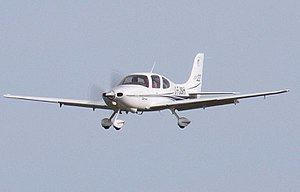
Cirrus sr22t g5 flight review
Design and development
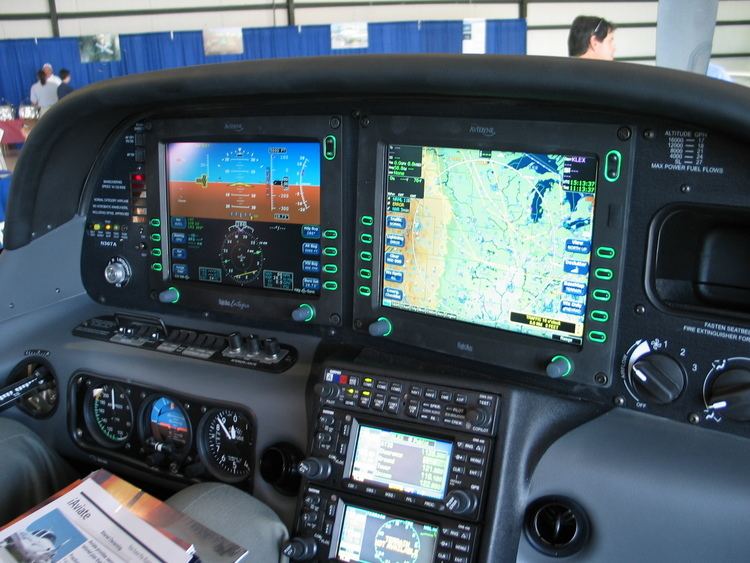
The SR22, certified in November 2000, is a more powerful version of the earlier SR20. The SR22 is a low-wing cantilever monoplane of composite construction, featuring fixed (non-retractable) tricycle landing gear with a castering nose wheel and steering via differential braking on the main wheels. It is powered by a nose-mounted 310 hp (231 kW) Continental IO-550-N piston engine. The four-seat cabin is accessed through doors on either side of the fuselage.

The Cirrus SR22 is equipped with the Cirrus Airframe Parachute System (CAPS), which can lower the entire aircraft to the ground relatively gently in an emergency.
In 2004, the company introduced the SR22 G2 (Generation 2) and in 2007 the SR22 G3 (Generation 3). Both were defined by airframe modifications, G2 by fuselage and G3 by modified wing and landing gear.
In 2013, the manufacturer introduced the SR22 G5 (Generation 5) (there was no G4). Key changes were an increase in gross weight to 3,600 lb (1,633 kg) and a standard five-seat cabin arrangement. The G5 received only minor changes for 2014, including integrated LED lighting and Beringer brakes.
In 2014, the SR22 and SR22T had been the best-selling four-to-five-seat fixed-wing aircraft in the world for 12 years in a row.
In 2016, Cirrus introduced improvements to the SR Series, including Bluetooth wireless connectivity, remote keyless entry, convenience lighting system, and an easy-access door latch.
In 2017, the company introduced the SR22 G6 (Generation 6), with several major upgrades to the avionics and new navigation lighting.
Turbocharged models
Cirrus introduced the SR22 Turbo in 2006, with a Tornado Alley turbonormalizing upgrade kit, factory installed under a Supplemental Type Certificate. It included twin turbonormalizers and twin intercoolers. The conversion includes built-in oxygen and a Hartzell three-blade lightweight composite propeller. The weight of the conversion reduces the SR22's useful load. Air conditioning is available with the SR22 Turbo, but this further reduces the useful load. The turbo version has a certified ceiling of 25,000 feet (7,600 m), a maximum cruise speed of 211 knots (391 km/h), and a top speed of 219 knots (406 km/h).
In 2010, Cirrus introduced the SR22T. This used a new engine, the Continental TSIO-550K, which produces 315 hp (235 kW) with a 7.5:1 compression ratio and can run on 94 octane fuel.
Glass cockpit
SR22s and SR20s built before 2003 were equipped with traditional analog instruments and a 10" Multi-function display (MFD). In February 2003, Cirrus began offering SR22s with the Avidyne Entegra primary flight display (PFD), making the plane the first of its kind to come with a glass cockpit. Later that year, this instrumentation became standard equipment on all SR-series aircraft, and helped pioneer the use of glass cockpits in the light general aviation industry. Retrofits are available for the older aircraft that replace the instrument panels with one that includes the PFD, a new MFD and the installation of back-up mechanical instruments.
On 22 May 2008, Cirrus revealed the Cirrus Perspective glass cockpit (by Garmin). Both cockpits were available for a while (the Avidyne cockpit was initially standard equipment) and after 2008 the SR22 was sold with only the Perspective panel.
In 2009, the third-generation Cirrus SR22 GTS came equipped with a new enhanced vision system (EVS), a sophisticated dual-wavelength instrument that offers both infrared and synthetic vision.
At the 2010 EAA AirVenture, Cirrus announced its plans to certify Garmin's ESP system (Electronic Stability and Protection) on the Cirrus SR22. It included advanced flight envelope protection that could stabilize the aircraft with the push of a button, to avoid spiral from developing.
The Garmin Perspective-Plus avionics flight deck was introduced in 2017, with a faster processing speed, animated datalink weather, payload management, visual approach capabilities, wireless database uploads and more.
Flight into known icing
Cirrus completed testing for flight into known icing conditions (FIKI) on 12 January 2009. The equipment change involved installing a larger fluid tank for the TKS Ice Protection System and protecting more areas of the aircraft. The FAA approved the new installation in April 2009.
Operational History
Robert Goyer of Flying magazine wrote in a 2012 review that the Cirrus SR22 "is the most sophisticated single-engine civilian airplane ever built and by a long shot."
Ryan Campbell used an SR22 to become the youngest pilot to fly solo around the world. He completed his trip on 7 September 2013 in Australia. His SR-22, Spirit of the Sapphire Coast, was modified by removing three seats and adding a 160 U.S. gallons (610 L; 130 imp gal) fuselage tank for a total of 250 U.S. gallons (950 L; 210 imp gal) usable.
As of 2015, the SR22 series has deployed the parachute recovery system 53 times carrying 107 survivors.
Variants
Operators
The aircraft is used by flying schools, air charter and small air taxi carriers as well as private individuals and companies. The largest current dedicated fleet operator is ImagineAir, which commenced operations in 2007. SATSair was formerly the largest operator, with 26 aircraft. It began operation in 2004 and went out of business in 2009.
The French Air Force uses six SR22s as training aircraft, and in 2015 Emirates purchased 22 aircraft for training purposes.
Accidents and incidents
Between 2001 and May 2014, 147 US-registered Cirrus SR22 aircraft crashed, resulting in 122 fatalities.
In 2011, the accident record of the SR20/SR22 was examined by Aviation Consumer magazine. It found that the series' overall accident record is better than average for light aircraft, exceeded only by the Diamond DA40 and DA42. However its fatal accident rate is worse, at 1.6 per 100,000 flight hours—which places it higher than the United States general aviation rate of 1.2, and higher than the Diamond DA40 (0.35), Cessna 172 (0.45), Diamond DA42 (0.54), Cessna 182 (0.69), and the Cessna 400 (1.0), despite the SR22's full aircraft parachute system.
By the end of 2013, the accident rate had been reduced to a fatality rate of 1.01 per 100,000 flight hours. This was attributed to better training, particularly in use of the ballistic parachute system.
The accident rate continued to decrease in 2014, with a fatal rate of .42 per 100,000 flight hours, one of the industry's lowest. This marked the fewest fatalities in a single year for Cirrus since 2001, and the first year where the number of CAPS deployments (12) exceeded the number of fatal accidents (3).
Specifications
Data from Cirrus website and The Incomplete Guide to Airfoil Usage
General characteristics
Performance
Avionics
